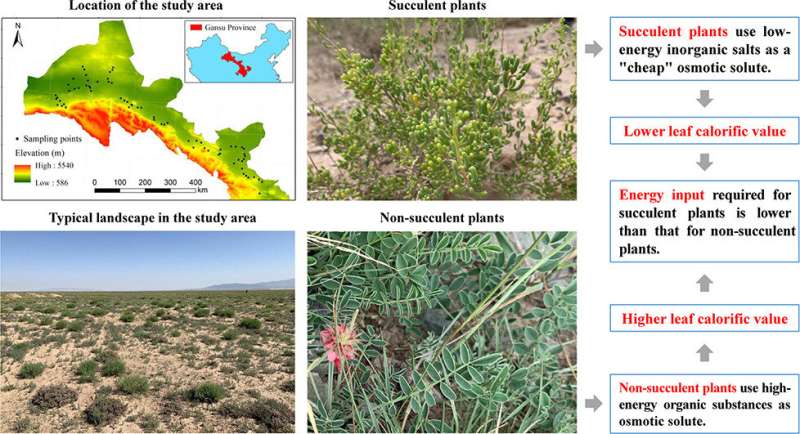Study reveals leaf calorific value and its influencing factors on desert plants

Leaf calorific value is an important trait that indicates how efficiently a plant utilizes natural resources to capture energy. However, prior research on leaf calorific values mainly focused on forest plants. The characteristics of the leaf calorific values of desert plants are not well understood.
There is abundant desert vegetation in the arid region of northwest China, including degraded leaf shrubs and fleshy leaf shrubs. A research team from the Northwest Institute of Eco-Environment and Resources of the Chinese Academy of Sciences investigated the leaf calorific value of desert plants in 78 sampling plots across an approximately 1,000-km long transect in the desert area of the Hexi Corridor.
The researchers measured the gross calorific value, ash-free calorific value, carbon content, nitrogen content, ash content and succulence index of 343 leaf samples.
Related results were published in Science of the Total Environment.
The results showed that leaf gross calorific value of desert plants was considerably lower than the average values for Chinese plants in other ecosystems, probably because half of the species in the study area are succulent plants with abnormally high leaf ash content.
Leaf succulence is an overriding trait that drives the differences in leaf calorific value among plant functional groups. The investment of energy substances for succulent plants in response to drought stress may be lower than that of non-succulent plants.
The researchers also found that drought has a direct negative effect on the accumulation of energy-rich substances in leaves of desert plants.
More information: Lilong Wang et al, Differences and spatial variations of plant leaf calorific value in deserts of the Hexi Corridor, Northwestern China, Science of The Total Environment (2022).
Journal information: Science of the Total Environment
Provided by Chinese Academy of Sciences





















